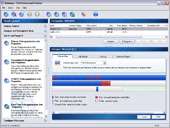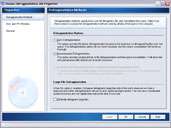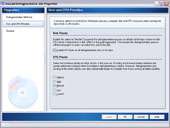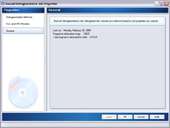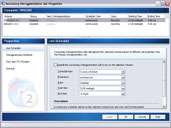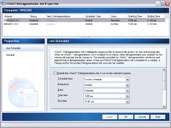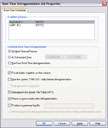- Qualcomm Launches Snapdragon 4 Gen 2 Mobile Platform
- AMD Launches Ryzen PRO 7000 Series Mobile & Desktop Platform
- Intel Launches Sleek Single-Slot Arc Pro A60 Workstation Graphics Card
- NVIDIA Announces Latest Ada Lovelace Additions: GeForce RTX 4060 Ti & RTX 4060
- Maxon Redshift With AMD Radeon GPU Rendering Support Now Available
Diskeeper 10 Professional Premier

Diskeeper is back with their top notch Defragmentation software. The new version takes a lot of features that have helped make the software so great, and made them even better. You now will even have the capability of defragging computers on your network. Let’s take a look at the latest version and see if it’s worth your hard earned money.
Page 3 – Options and Conclusion
Hitting the Set It and Forget It button opens up the automated defrag job properties pane. These jobs are the Primary and Secondary jobs, the IFAAST job and the Boot-Time job.The primary and secondary jobs allow you to set 2 different jobs. For example, you can set your PC to defrag whenever your screensaver runs as your primary job and as your secondary job set it to run on a specific date and time or weekly or daily thus ensuring that if for some reason your screensaver never has a chance to run your PC will still be getting defragged.
You can set different methods between the Primary and Secondary jobs, for the primary job you can set it to use quick defragmentation and on the secondary set it to recommended or comprehensive (yes I know that it’s greyed out in that screenshot but that’s for manual where it’s unavailable. For Set It and Forget It jobs it is available) and keep your disk at peak performance. I’d like to back peddle here a bit and explain a bit about the manual options. I know I never covered the preferences for manual defragmentation but that was simply to avoid redundant writing since they are shared between manual, Primary and Secondary.
The other properties are Disk Priority and CPU Priority which allow you to set how hard the job will hit your system. If you choose a time that the job will run while you are using the PC then choosing Disk Priority and lower CPU priority will allow you to load the system down without any kind of odd issues showing up although I tend to leave it at "normal" on the CPU setting and I don’t have any issues. For a slower system like a small Athlon or a PIII, lowering the CPU Priority may not be a bad idea. The Disk Priority setting is a very cool option and I keep it toggled so that I can hit the HDD hard and not experience slowdowns and you can definitely feel the difference.
I’d like to cover the Large File Defragmentation here, if you have large files that are spread out on the drive rather than try to wedge them into the file structure this setting will allow them to be more efficiently fit on the drive. This allows for a faster defragmentation but you’ll end up with gaps of free space between files. I’m rather anal about my drive structure so I choose to go with the longer route so I leave it unchecked but if you’re after a good quick defrag it is a nice option. Another thing worth mentioning is that these options are not global, they are available per drive so you can set each drive to have its own settings.
The job Schedule for Primary, Secondary and IFAAST are all basically the same. You have to tie IFAAST in with either a Primary or Secondary job, be forewarned though, IFAAST is a very detailed defrag and requires a lot of time. It will net you a good performance boost so it is worth it but you’d be best to set it run at such a time as you’re not using your PC or else you’ll be defeating the purpose of running it. As a result I haven’t used it since there is never a time in the day that I’m not using my PC for some period of time out of every day. For working Joes, though, setting it to run weekly on payday (since you’ll most likely be gone longer on payday) wouldn’t be a bad idea.
Boot-Time defrag allows you to set a schedule for defraging your drive during the boot process. This allows such things as defraging the MFT, the Page File and putting all the folders together in one contiguous section on the drive which can’t be done while Windows is up and running fully. Boot-Time defraging loads only the bare minimum so that nothing else is being used and can be moved. It runs in the same mode as chkdsk so it’s very basic as to what is running at the time. If you have any reason to believe that you might have errors on the drive you can choose to run chkdsk before running the defrag to make certain you’re not going to further compound your troubles by moving info into a bad sector.
Diskeeper 10 Professional Premier is one very nice piece of software. It does quite a bit more than the novice PC user will ever need so if you fall into that category look to either the Pro or Home version but if you’re a "Hardcore PC Abuser" or "Power User" this piece of software is for you. Yes it does things that some of us won’t ever do such as defraging networked drives but it also allows you to wring every last bit of performance out of your drive sub-system and for many of us that’s paramount because in the greater scheme of things the drive sub-system is the biggest bottleneck in the PC. With memory capable of passing 2000-8000+MB/s and CPUs capable of billions of instructions per second our PCs are often waiting on the HDD to cough up the data needed to do the work we want done. Anything that can give you a drop in the time needed to get that data into use is a worthy investment to say the least.
Diskeeper 10 Pro Premier is also very user friendly, it offers a very nicely done guided method and a easy right click and shoot method for more advanced users. It also has a very slick UI that blends nicely with MCE 2005 which I’ve dabbled with a bit and I think is one of the sweetest looking versions of Windows to date. All in all I’m very impressed with Diskeeper Professional Premier and I think anyone that gives it a whirl will be just as impressed as I am. The beauty part is you can give it a shot for free from Diskeeper’s website. Go give it a shot and you’ll see why I’m giving it a perfect 10 out of 10 and awarding it our coveted Editor’s Choice Award!
Have something to say? Spit it out in our forums! Registration is not necessary in order to reply to our content related threads.


|
|
Support our efforts! With ad revenue at an all-time low for written websites, we're relying more than ever on reader support to help us continue putting so much effort into this type of content. You can support us by becoming a Patron, or by using our Amazon shopping affiliate links listed through our articles. Thanks for your support!




